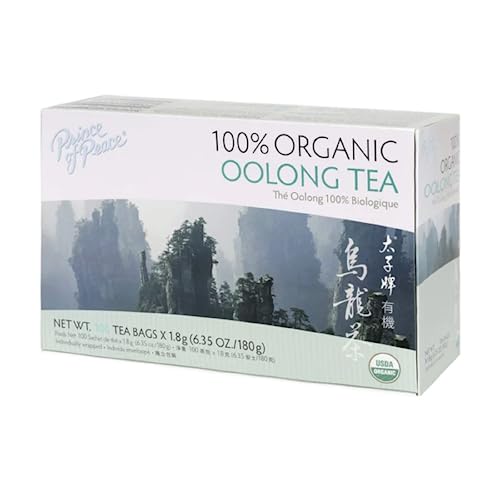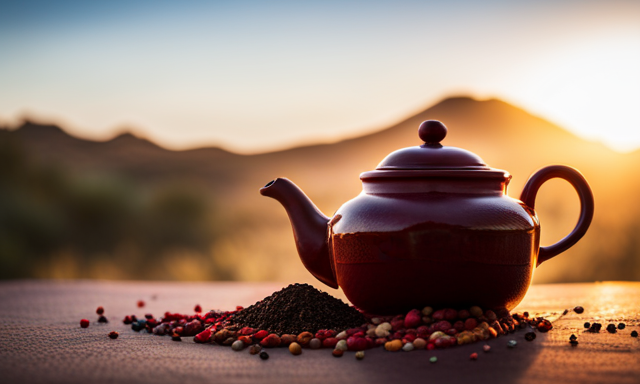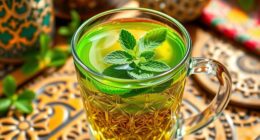I’m absolutely fascinated by the world of tea, and one variety that has always caught my attention is rooibos tea. Let me tell you, this tea is something truly special. Its origins, the way it’s cultivated and produced, and the flavor profile it offers are all incredibly unique. If you’re like me and enjoy exploring different types of tea, you’ll definitely want to dive into the world of rooibos tea.
So, where does rooibos tea come from? Well, get ready for a journey to the beautiful lands of South Africa. This is where rooibos tea has its roots, quite literally. The tea is harvested from the Aspalathus linearis plant, which only grows in specific regions of South Africa. The cultivation and production process is meticulous, ensuring that the tea retains its distinct flavor and health benefits.
In this article, we’ll delve into the fascinating world of rooibos tea. From its origins to its sustainability, and even its presence in popular culture, we’ll cover it all. So, get your teacup ready, because we’re about to embark on a journey through the enchanting world of rooibos tea.
Key Takeaways
- Rooibos tea originates from South Africa, specifically the Western Cape province.
- It is made from the leaves of the Aspalathus linearis plant.
- Rooibos tea is caffeine-free and rich in antioxidants.
- It has been linked to a lower risk of heart disease and improved digestion.
Introduction to Rooibos Tea
Rooibos tea, also known as red bush tea, originates from the Western Cape province of South Africa. As an avid tea drinker, I can confidently say that rooibos tea is a unique and flavorful beverage that has gained popularity worldwide.
One of the main reasons for its growing popularity is the numerous health benefits it offers. Rooibos tea is naturally caffeine-free and packed with antioxidants, making it a great choice for those looking to improve their overall well-being. It has been linked to a lower risk of heart disease, improved digestion, and even enhanced skin health.
With its earthy and slightly sweet taste, rooibos tea is not only delicious but also a great alternative to traditional caffeinated teas.
Now, let’s dive into the origins of this remarkable brew.
Origins of Rooibos Tea
Rooibos tea, native to South Africa, holds a long history deeply rooted in indigenous knowledge and traditional use. The tea comes from the leaves of the Aspalathus linearis plant, which has been used by the local people for centuries due to its numerous health benefits and soothing properties.
As a result, rooibos tea has become an integral part of South African culture and is recognized worldwide for its distinct flavor and wellness benefits.
Native to South Africa
Indigenous to the heart of South Africa, this extraordinary tea transports your taste buds on a captivating journey through the vibrant landscapes of the Cape. Rooibos tea, also known as ‘red bush tea,’ is deeply rooted in South African culture and traditional remedies.
The tea is made from the leaves of the Aspalathus linearis plant, which can only be found in the rugged Cederberg region of the Western Cape. The local Khoisan people have been using rooibos tea for centuries due to its numerous health benefits and soothing properties. It’s known to alleviate allergies, promote digestion, and boost the immune system.
The rich history and traditional use of rooibos tea reflect the indigenous knowledge and wisdom of the South African people. Transitioning into the next section, let’s delve deeper into the indigenous knowledge and traditional use of this remarkable tea.
Indigenous knowledge and traditional use
Originating in South Africa, this remarkable tea has been cherished for centuries for its healing properties and has become deeply ingrained in the culture and traditions of the local people. Indigenous knowledge preservation plays a crucial role in understanding the traditional use of rooibos tea. Passed down through generations, this knowledge encompasses the various medicinal and therapeutic benefits of the tea, as well as the rituals and ceremonies associated with its consumption.
Medicinal and Therapeutic Benefits:
- Soothes digestive ailments
- Relieves allergies and asthma symptoms
Rituals and Ceremonies:
- Used to celebrate important milestones
- Offered as a gesture of hospitality
Preserving this indigenous knowledge is essential not only for maintaining the cultural significance of rooibos tea but also for ensuring its sustainable cultivation and production process. By understanding the traditional practices, we can cultivate and produce rooibos tea in a way that respects and honors its historical and cultural importance.
Transitioning into the subsequent section, let’s explore the cultivation and production process of this unique tea.
Cultivation and Production Process
To cultivate and produce rooibos tea, you’ll need to start by carefully selecting the finest red bush leaves. These leaves are harvested during the peak season, which typically occurs in the summer months of January and February. Cultivation techniques include pruning the bushes to encourage new growth and ensuring they receive adequate sunlight and water.
After harvesting, the leaves are then fermented, a meticulous process that involves bruising the leaves and allowing them to oxidize. This fermentation process is crucial as it enhances the tea’s distinctive flavor and deep red color. Once the leaves have been fermented, they are dried and cut into fine pieces. This results in a rich, flavorful infusion that is enjoyed worldwide.
Moving on to the next section about flavor profile and health benefits, rooibos tea offers a unique taste and a range of health-promoting properties.
Flavor Profile and Health Benefits
Immerse yourself in the delightful world of rooibos tea, as its unique flavor and array of health benefits envelop your senses and nourish your body.
When it comes to flavor preferences, rooibos tea offers a smooth and slightly nutty taste with a hint of sweetness. It lacks the bitterness and astringency often found in traditional teas, making it a popular choice for those who prefer a milder flavor.
To truly savor the distinct flavors of rooibos tea, it’s essential to use the right brewing techniques. The general rule of thumb is to steep the tea in freshly boiled water for about 5-7 minutes. This allows the flavors to fully develop and ensures a rich and satisfying cup of tea. However, some individuals may prefer a stronger infusion and can extend the steeping time to suit their taste.
As we journey into the next section about "types of rooibos tea," let’s explore the diverse range of flavors and options that await us.
Types of Rooibos Tea
Indulge in the myriad of options available when exploring the various types of rooibos tea, each offering a unique and exquisite flavor profile to delight your taste buds.
Different rooibos blends provide a range of flavors and aromas, allowing you to discover your personal favorite. From classic rooibos to fruity blends like berry or citrus-infused rooibos, there’s a tea for every palate.
In addition to their delicious taste, these teas also offer numerous health benefits. Rooibos tea is rich in antioxidants, aids digestion, and supports a healthy immune system. It’s also caffeine-free, making it a perfect choice for those looking for a soothing and calming beverage.
Transitioning into the subsequent section about popular uses and recipes, let’s explore the exciting ways to incorporate rooibos tea into your daily routine.
Popular Uses and Recipes
If you’re looking to spice up your daily routine, there are a plethora of ways to incorporate rooibos tea into your favorite recipes and discover the true magic of this flavorful beverage.
Rooibos tea not only offers a unique taste but also provides numerous health benefits. It’s rich in antioxidants, which help fight free radicals and boost your immune system. Additionally, rooibos tea is caffeine-free, making it a great alternative for those looking to reduce their caffeine intake.
From rooibos-infused smoothies and iced teas to rooibos-flavored desserts and marinades, the possibilities are endless. You can even use rooibos tea as a base for savory dishes like braised meats or as a flavorful ingredient in salad dressings.
So why not explore the versatility of rooibos tea and discover how it can elevate your culinary creations?
Speaking of elevating, let’s now delve into the fascinating world of rooibos tea and sustainability.
Rooibos Tea and Sustainability
Now that we’ve explored the popular uses and recipes of rooibos tea, let’s delve into the sustainability challenges and environmental impact associated with its production.
As a tea lover, I’m always interested in understanding the ecological footprint of the beverages I consume. Rooibos tea, primarily cultivated in South Africa’s Cederberg region, faces several sustainability challenges due to its increasing global demand. The cultivation of rooibos requires specific climate and soil conditions, making it vulnerable to climate change and land degradation.
Additionally, the intensive farming practices, such as the use of pesticides and fertilizers, can have detrimental effects on the environment. It’s crucial for the industry to find sustainable solutions to mitigate these challenges and minimize the environmental impact of rooibos tea production.
Transitioning now to the next section, let’s explore how rooibos tea has made its mark in popular culture.
Rooibos Tea in Popular Culture
Rooibos tea holds a significant place in South African traditions, where it’s been enjoyed for centuries. Its rich and earthy flavor has made it a staple in the local culture. It’s often consumed as a warm and comforting beverage.
In recent years, rooibos tea has gained international recognition and popularity. People around the world are embracing its unique taste and health benefits. Its rise to fame can be attributed to its natural caffeine-free nature, antioxidant properties, and soothing effects. This makes it a favorite among tea enthusiasts worldwide.
Rooibos tea in South African traditions
South African traditions have embraced rooibos tea for centuries. It holds a special place in our rituals and has significant cultural significance. Rooibos tea is not just a beverage; it is a symbol of our heritage and traditions. Its rich reddish-brown color and distinct earthy flavor are deeply ingrained in our cultural identity.
To understand the role of rooibos tea in South African traditions, let’s take a closer look at some of the rituals and customs associated with it:
| Rituals | Cultural Significance |
|---|---|
| Birth ceremonies | Symbolizes new beginnings and blessings |
| Ancestral ceremonies | Honors and connects with our ancestors |
| Healing rituals | Brings comfort and promotes wellness |
| Celebrations and gatherings | Enhances social bonding and unity |
Rooibos tea’s presence in our traditions has not gone unnoticed. Its unique taste and health benefits have gained international recognition and popularity. As we delve into its global appeal, we can appreciate how rooibos tea has transcended borders and become a beloved beverage worldwide.
International recognition and popularity
With its unique taste and health benefits, rooibos tea has gained international recognition and become a beloved beverage worldwide. Its popularity has soared in recent years, with global consumption steadily increasing. People from all corners of the globe are now enjoying this delicious and refreshing tea.
The international recognition of rooibos tea can be attributed to its numerous health benefits, including its high levels of antioxidants and its ability to aid in digestion and promote relaxation. Additionally, its naturally caffeine-free nature makes it a popular choice for those looking for a soothing alternative to traditional teas.
As the demand for rooibos tea continues to grow, it is now easier than ever to find this delightful beverage in stores and online.
Transitioning into the next section, let’s explore where to buy rooibos tea.
Where to Buy Rooibos Tea
When it comes to buying Rooibos tea, there are a few key options to consider.
Firstly, you can explore local South African markets and shops, where you can find a wide variety of Rooibos tea options. These markets and shops often offer high-quality, locally-sourced teas that allow you to experience the true essence of Rooibos.
Additionally, online retailers have made it easier than ever to purchase Rooibos tea from the comfort of your own home. Many online retailers specialize in sourcing and selling a wide range of Rooibos tea varieties, ensuring that you have plenty of options to choose from.
Lastly, specialty tea stores are another great option for purchasing Rooibos tea. These stores often have a knowledgeable staff who can guide you towards the best Rooibos teas based on your preferences, and they may even offer tastings so you can sample before you buy.
Local South African markets and shops
If you’re in South Africa, you can easily find rooibos tea in local markets and shops. Here are a few places where you can get your hands on this delightful tea:
-
Green Market Square is a bustling market in Cape Town that offers a wide variety of rooibos tea. You can find different flavors and blends, all made with the finest locally sourced ingredients.
-
O.R. Tambo International Airport is another great place to purchase rooibos tea. Many shops in the airport stock a range of teas, including rooibos. It’s the perfect opportunity to grab some last-minute souvenirs.
-
Tea merchants in Johannesburg are known for their selection of traditional rooibos teas. These specialized shops have a wide range of flavors and can even guide you on how to incorporate rooibos into traditional recipes.
Now, if you’re looking for more options, let’s explore online retailers and specialty tea stores.
Online retailers and specialty tea stores
After exploring the local South African markets and shops for rooibos tea, I was eager to expand my search to online retailers and specialty tea stores. These platforms offer a convenient and diverse selection of rooibos tea options, making it easier for tea enthusiasts like me to explore different flavors and brands from the comfort of home.
Online retailers such as Amazon and Tea Forte provide a wide range of rooibos tea products, including blends with various herbs and spices. Specialty tea shops, both online and brick-and-mortar, offer a curated collection of high-quality rooibos tea sourced from different regions. These retailers often provide detailed descriptions and brewing instructions, ensuring that you can make the most out of your rooibos tea experience.
Transitioning into the next section about enjoying the taste and benefits of rooibos tea, let’s now explore how to prepare and savor this delightful beverage.
Conclusion: Enjoying the Taste and Benefits of Rooibos Tea
Indulge in the delightful taste and incredible benefits of rooibos tea. This unique herbal tea, originating from the beautiful Cederberg region of South Africa, is renowned for its rich flavor and numerous health benefits.
When it comes to enjoying the taste, rooibos tea offers a smooth and naturally sweet profile, making it a perfect alternative to traditional caffeinated beverages. Its unique blend of antioxidants and minerals provides a range of health benefits, including improved digestion, enhanced immune function, and reduced inflammation.
The absence of caffeine also ensures a calming effect, making it an ideal choice for relaxation and stress relief. Whether you prefer it hot or iced, rooibos tea is a delightful and healthy beverage that can be enjoyed throughout the day.
So, why not treat yourself to a cup and experience all that rooibos tea has to offer?
Frequently Asked Questions
What is the history behind the name "rooibos" and how did it come about?
The name ‘rooibos’ has a fascinating history. It originated from the Afrikaans word meaning "red bush," referring to the vibrant color of the tea leaves. This tea holds immense cultural significance in South Africa, symbolizing tradition and heritage.
Are there any specific regions or areas in South Africa where rooibos tea is predominantly grown?
In South Africa, the regions of Cederberg and Clanwilliam are known for the cultivation and production of Rooibos tea. These areas have the ideal climate and soil conditions for the growth of this popular tea.
Can rooibos tea be enjoyed hot and cold, and are there any specific recipes or methods for preparing it?
Rooibos tea can be enjoyed both hot and cold. For a hot brew, steep rooibos tea bags in boiling water for 5 minutes. For a refreshing cold brew, steep the tea bags in cold water overnight. It offers numerous health benefits, such as antioxidants and anti-inflammatory properties. Try adding lemon and honey for added flavor.
Are there any known potential side effects or interactions with medications when consuming rooibos tea?
Rooibos tea has many potential health benefits and is generally considered safe when consumed in moderation. However, it’s always best to consult with a healthcare professional for recommended dosage and to ensure there are no interactions with medications.
Is rooibos tea a caffeine-free option, and is it suitable for individuals with certain dietary restrictions such as gluten or lactose intolerance?
Rooibos tea is a caffeine-free option, making it suitable for individuals with dietary restrictions like gluten or lactose intolerance. It also offers numerous health benefits, including improved digestion and immune support.
Conclusion
In conclusion, after diving into the fascinating world of Rooibos tea, it’s clear that this South African wonder has gained immense popularity for good reason. With its unique flavor profile and numerous health benefits, it has become a beloved beverage around the globe.
But did you know that the global demand for Rooibos tea has increased by a staggering 50% in the past decade? This statistic showcases just how much people are embracing this delicious and nutritious alternative to traditional teas.
So why not join the trend and indulge in the delightful taste and benefits of Rooibos tea today?










